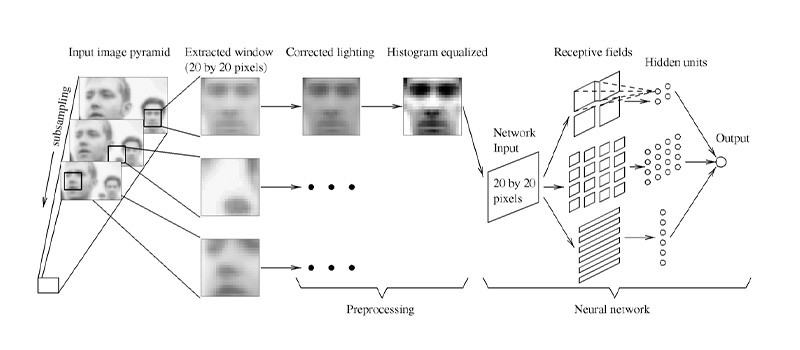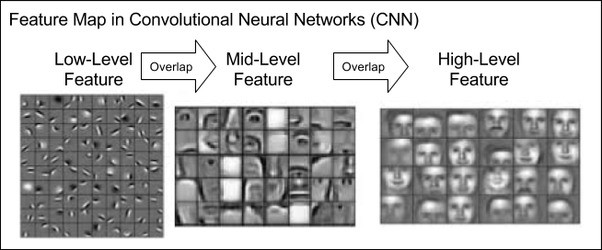Face detection technology has evolved significantly since the mid-20th century, marking remarkable progress in identifying human faces in digital images. This article delves into the most influential methods in the history of face detection, highlighting their unique approaches and contributions to the field.
1966: Edge Detection by L. G. Roberts
Edge Detection, conceptualized by L. G. Roberts in 1966, marked a foundational step in face detection. This method focuses on identifying the boundaries of objects within an image, such as the hairline, eyebrows, nose, and mouth in a face. By distinguishing these edges, it became possible to outline facial features, setting the stage for more complex recognition techniques.

1972: Feature Extraction by K. T. Kanade
Kanade's Feature Extraction, introduced in 1972, advanced face detection by identifying and analyzing specific facial features like eyes, nose, and mouth. This technique allowed for a more detailed understanding of the face, enabling systems to differentiate faces from other objects in an image.
1980: Template Matching by K. K. Sung
In 1980, Template Matching by K. K. Sung revolutionized face detection by comparing images to a predefined template of a face. This method proved effective in identifying faces by assessing how closely an image aligned with the facial template.
1988: Neural Networks by T. Poggio
T. Poggio's introduction of Neural Networks in 1988 brought a significant leap in face detection capabilities. These machine learning algorithms are trained to recognize complex patterns, including facial structures, offering a more adaptable and accurate face detection method.

1991: Active Shape Models by T. F. Cootes and C. J. Taylor
Active Shape Models, developed by Cootes and Taylor in 1991, utilized statistical models to adapt a facial template to fit a face in an image accurately. This approach allowed for greater flexibility and precision in detecting various facial shapes and sizes.
1994: Support Vector Machines (SVMs) by Bosse, Knörzer, and Gilgenbach
The introduction of Support Vector Machines (SVMs) in 1994 by Bosse, Knörzer, and Gilgenbach provided a robust classification tool in face detection. SVMs efficiently classified images into categories, distinguishing those with faces from those without.
2001: Viola-Jones Algorithm by P. Viola and M. Jones
The Viola-Jones Algorithm, introduced in 2001, revolutionized face detection with its speed and accuracy. It employs haar-like features to rapidly and effectively identify faces in images, setting a new standard in the field.
2012: Deep Convolutional Neural Networks (CNNs) by Krizhevsky, Sutskever, and Hinton
Finally, the advent of Deep Convolutional Neural Networks (CNNs) in 2012 by Krizhevsky, Sutskever, and Hinton marked a groundbreaking advancement in face detection. CNNs, with their exceptional capabilities in image recognition, have achieved state-of-the-art performance, making them the cornerstone of modern face detection technologies.

The journey of face detection methods from edge detection to deep learning-based CNNs illustrates the remarkable strides made in this field. Each method has contributed uniquely to the evolution of face detection, leading to the sophisticated, highly accurate systems we see today.
In case you are looking for a face recognition SDK get your free license here.
























